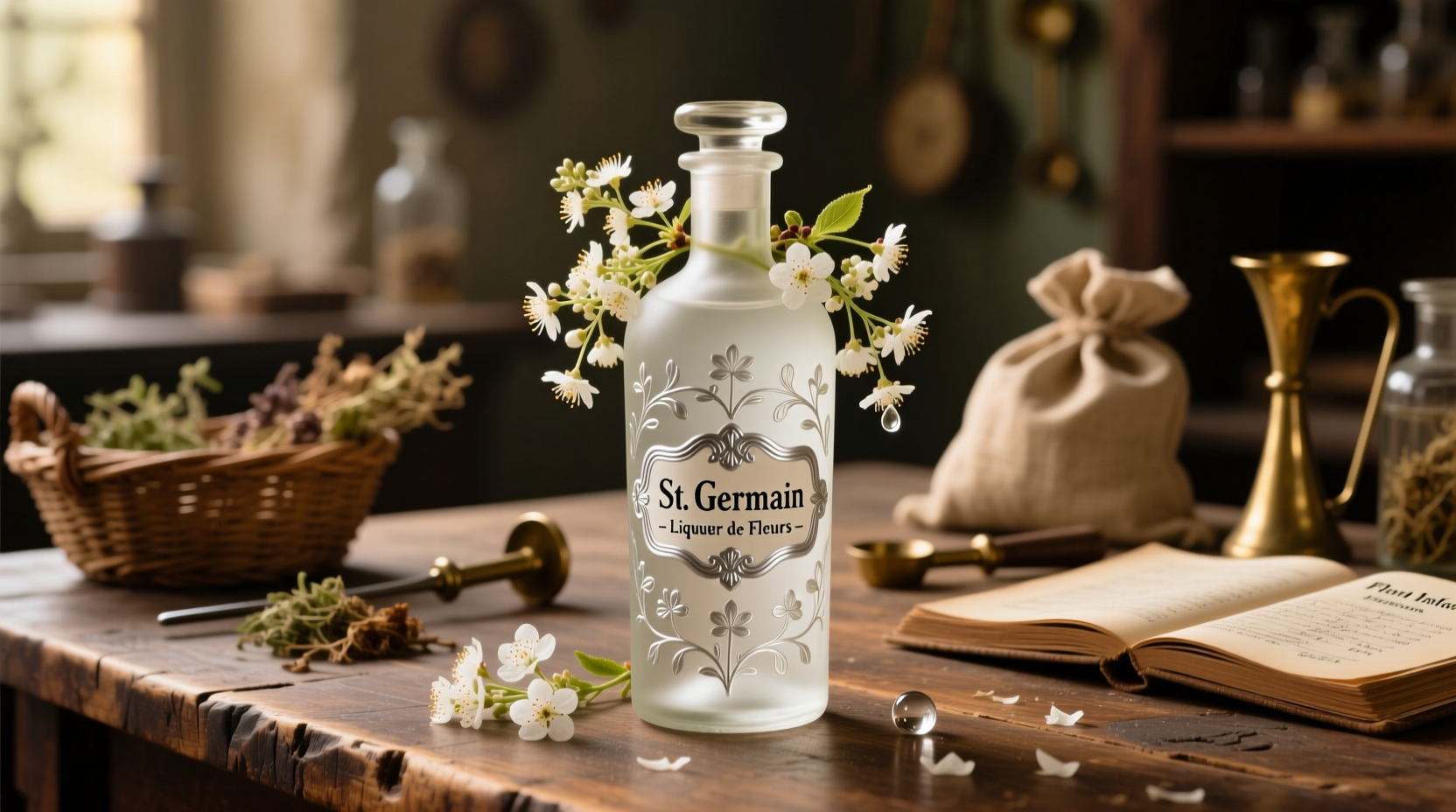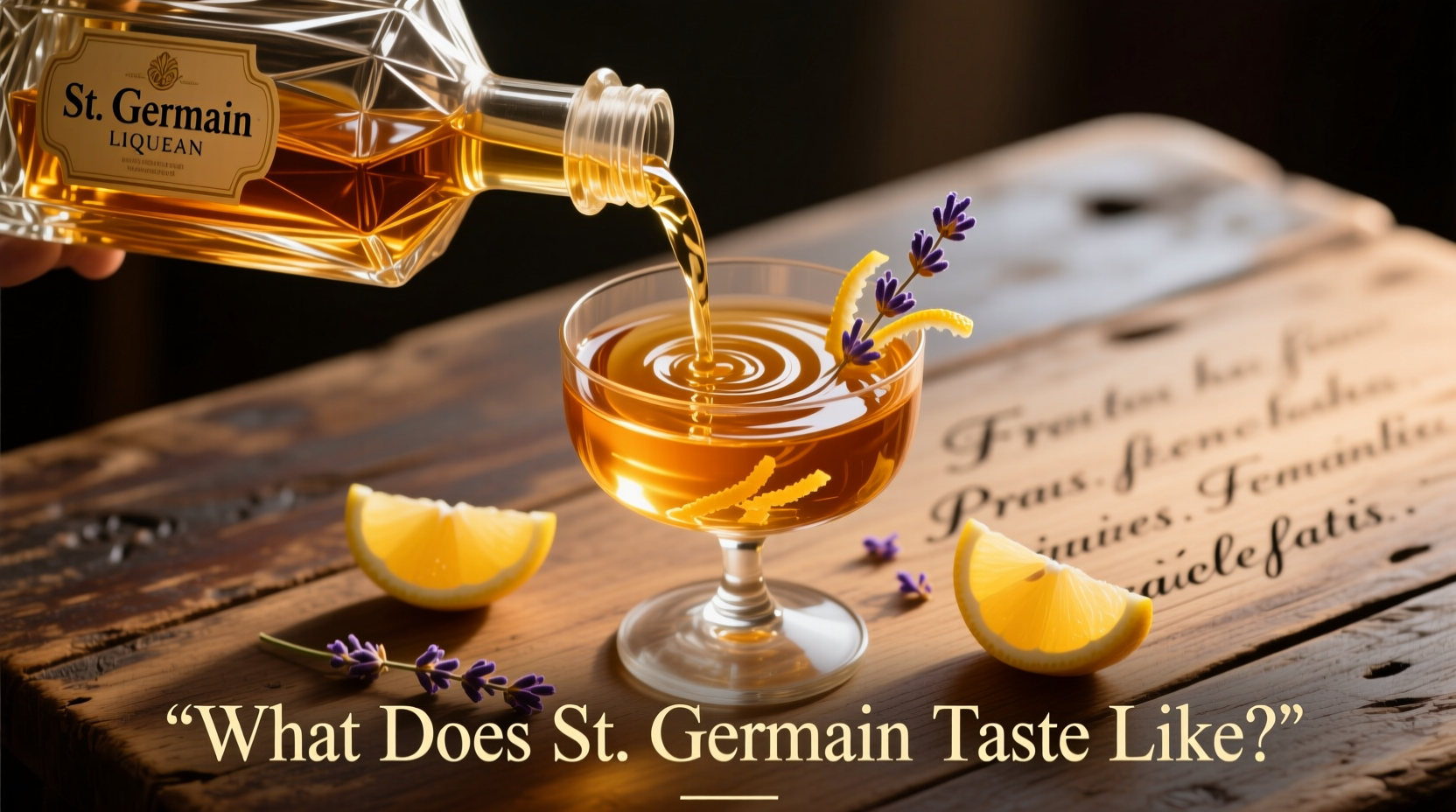Discover exactly what makes this French elderflower liqueur a bartender's secret weapon and how to use it to elevate your drinks and dishes. Whether you're considering your first bottle or looking to deepen your understanding of this versatile spirit, you'll learn precise flavor notes, ideal pairings, and common misconceptions to avoid.
The Complete Flavor Profile of St. Germain
St. Germain isn't just "floral"—it delivers a complex sensory experience that explains its popularity among professional mixologists and home enthusiasts alike. The liqueur captures the essence of Sambucus nigra elderflowers harvested at their peak in the Alpine regions of Europe.
When you take your first sip, you'll notice:
- Aromatic opening: An immediate burst of fresh elderflower with hints of lychee and white peach
- Middle palate: Ripe pear notes balanced by subtle citrus zest (primarily lemon and bergamot)
- Finish: A clean, slightly sweet conclusion with hints of honeysuckle and a touch of vanilla
Unlike artificial floral liqueurs, St. Germain maintains remarkable freshness without overwhelming sweetness. At 20% alcohol by volume and approximately 20g of sugar per 100ml, it strikes a perfect balance between liqueur richness and cocktail versatility.
How Production Affects Flavor
The distinctive taste of St. Germain comes from its meticulous production process. Unlike mass-produced alternatives, St. Germain uses only hand-harvested elderflowers collected during the brief two-week blooming period each spring.
| Production Element | Impact on Flavor Profile |
|---|---|
| Hand-harvested elderflowers | Preserves delicate floral compounds that machine harvesting would destroy |
| Small-batch distillation | Maintains nuanced flavor notes rather than creating a single dominant taste |
| Natural sugar sources | Creates balanced sweetness without artificial aftertaste |
| No artificial flavors | Ensures authentic elderflower character rather than generic "floral" profile |
This careful approach explains why St. Germain tastes distinctly different from other elderflower liqueurs that use artificial flavors or mass production techniques. The result is a spirit that genuinely captures the ephemeral taste of fresh elderflowers rather than a generic floral approximation.

How St. Germain Compares to Similar Products
Understanding what makes St. Germain unique requires comparing it to other options in the floral liqueur category:
- Other elderflower liqueurs: Many competitors use artificial flavors and higher sugar content, resulting in a one-dimensional, overly sweet profile without the nuanced pear and citrus notes
- Rose liqueurs: Tend to be more perfumey with stronger rosewater characteristics rather than the fruit-forward profile of St. Germain
- Violette liqueurs: Offer a more medicinal, candy-like floral note compared to St. Germain's fresh blossom quality
- Simple floral syrups: Lack the complexity and alcohol integration that makes St. Germain work so well in cocktails
Professional bartenders consistently choose St. Germain for its ability to enhance rather than dominate cocktails. Its moderate sweetness (less than triple sec but more than dry vermouth) makes it exceptionally versatile across cocktail types.
Practical Uses: Beyond the Basic Cocktail
While St. Germain shines in cocktails, understanding its precise flavor profile helps you use it more effectively:
Cocktail Applications
- Classic pairing: Combine with gin, lemon juice, and soda for a refreshing Elderflower Spritz that highlights its floral notes
- Spirit modifier: Add ¼ oz to champagne cocktails to enhance fruit notes without overwhelming the wine
- Sour balance: Substitute for simple syrup in whiskey sours to add floral complexity
Culinary Uses
- Fruit preparations: Drizzle over fresh berries or poached pears to enhance natural sweetness
- Dessert sauces: Incorporate into crème anglaise or fruit coulis for sophisticated flavor
- Marinades: Use in light marinades for poultry or seafood (1 part St. Germain to 3 parts citrus juice)
When substituting St. Germain in recipes, remember that its floral intensity means you typically need less than other sweeteners—start with half the recommended amount and adjust to taste.
Common Misconceptions About St. Germain's Flavor
Several myths persist about this popular liqueur that can lead to disappointment if not addressed:
- "It's too sweet" - While sweet, St. Germain's sugar content (approximately 20g/100ml) is moderate compared to many liqueurs. Its sweetness is balanced by bright acidity.
- "All elderflower liqueurs taste the same" - Production methods create dramatic differences. Mass-produced versions often taste artificial and one-dimensional.
- "It tastes like perfume" - Authentic St. Germain has a fruit-forward profile rather than soapy floral notes when used properly.
- "It doesn't mix well with dark spirits" - Surprisingly, St. Germain complements aged rum and bourbon in careful proportions (try 1:4 spirit to St. Germain).
Understanding these distinctions helps set accurate expectations for what St. Germain actually tastes like and how to use it effectively.
When St. Germain Shines Best: Context Matters
St. Germain performs differently depending on what it's paired with. Consider these context boundaries:
- Ideal temperature: Serve chilled (45-50°F / 7-10°C) to preserve delicate floral notes
- Best pairings: Works exceptionally well with citrus, light berries, cucumber, and herbal ingredients like basil or mint
- Less successful combinations: Can be overwhelmed by strong spices, heavy chocolate, or intensely smoky elements
- Shelf life after opening: Flavor begins to fade after 6-8 months—mark your bottle when opened
Professional mixologists note that St. Germain's flavor profile changes subtly when mixed with acidic ingredients versus creamy ones. In citrus-based cocktails, the pear notes become more prominent, while in creamy drinks, the floral elements shine through more clearly.
How to Taste St. Germain Like a Professional
To fully appreciate St. Germain's flavor profile, follow this professional tasting approach:
- Pour a small amount (about 1 oz) into a stemmed glass
- Observe the pale golden hue with slight green undertones
- Swirl gently and inhale deeply—note the fresh floral aroma with subtle fruit hints
- Take a small sip and let it coat your palate before swallowing
- Pay attention to how the flavor evolves from initial sweetness to the clean finish
- Notice how the texture feels—St. Germain should be smooth but not syrupy
This method helps you detect the nuanced flavor progression that makes St. Germain stand out from simpler floral liqueurs.
Authentic St. Germain vs. Imitators: What to Look For
Unfortunately, the popularity of St. Germain has led to many inferior imitations. Here's how to identify authentic flavor characteristics:
- Real St. Germain has a complex flavor evolution rather than a single dominant note
- It should never taste artificially perfumed or soapy
- The sweetness should be balanced by natural acidity
- Look for subtle fruit notes (pear, citrus) alongside the floral character
- Avoid products with an overly sharp alcohol burn
According to the Beverage Testing Institute, authentic elderflower liqueurs like St. Germain score significantly higher in complexity and balance than mass-market alternatives.
Final Thoughts on St. Germain's Taste Profile
St. Germain offers a sophisticated flavor experience that bridges the gap between floral delicacy and fruit-forward approachability. Its precise balance of elderflower, pear, and citrus notes with moderate sweetness makes it remarkably versatile across cocktail applications and culinary uses.
Understanding exactly what St. Germain tastes like—not just "floral" but with specific fruit and floral notes in precise proportions—helps you use it more effectively and appreciate why it has become a staple in professional bars worldwide. When selecting and using St. Germain, focus on its nuanced flavor progression rather than expecting a single dominant taste.











 浙公网安备
33010002000092号
浙公网安备
33010002000092号 浙B2-20120091-4
浙B2-20120091-4